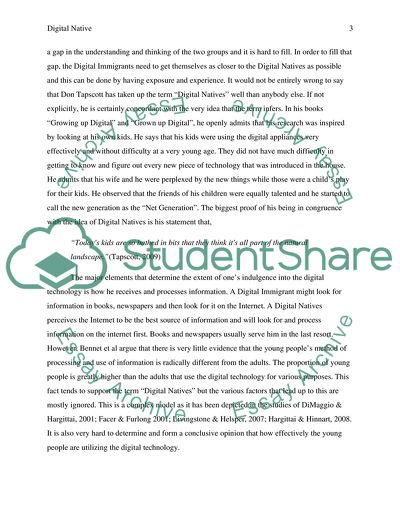Cite this document
(Digital Natives Essay Example | Topics and Well Written Essays - 1750 words, n.d.)
Digital Natives Essay Example | Topics and Well Written Essays - 1750 words. https://studentshare.org/design-technology/1759671-the-digital-native
Digital Natives Essay Example | Topics and Well Written Essays - 1750 words. https://studentshare.org/design-technology/1759671-the-digital-native
(Digital Natives Essay Example | Topics and Well Written Essays - 1750 Words)
Digital Natives Essay Example | Topics and Well Written Essays - 1750 Words. https://studentshare.org/design-technology/1759671-the-digital-native.
Digital Natives Essay Example | Topics and Well Written Essays - 1750 Words. https://studentshare.org/design-technology/1759671-the-digital-native.
“Digital Natives Essay Example | Topics and Well Written Essays - 1750 Words”. https://studentshare.org/design-technology/1759671-the-digital-native.


